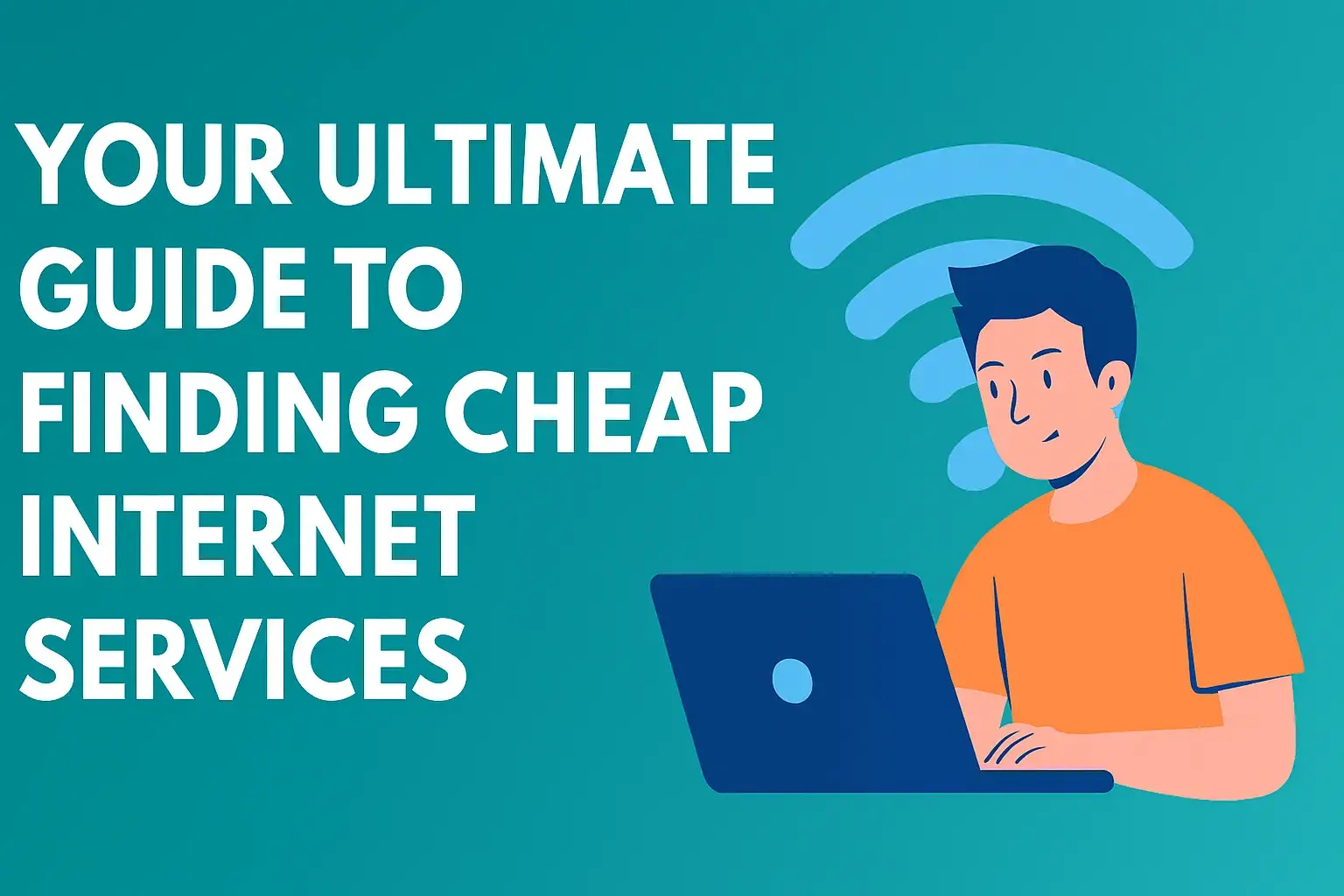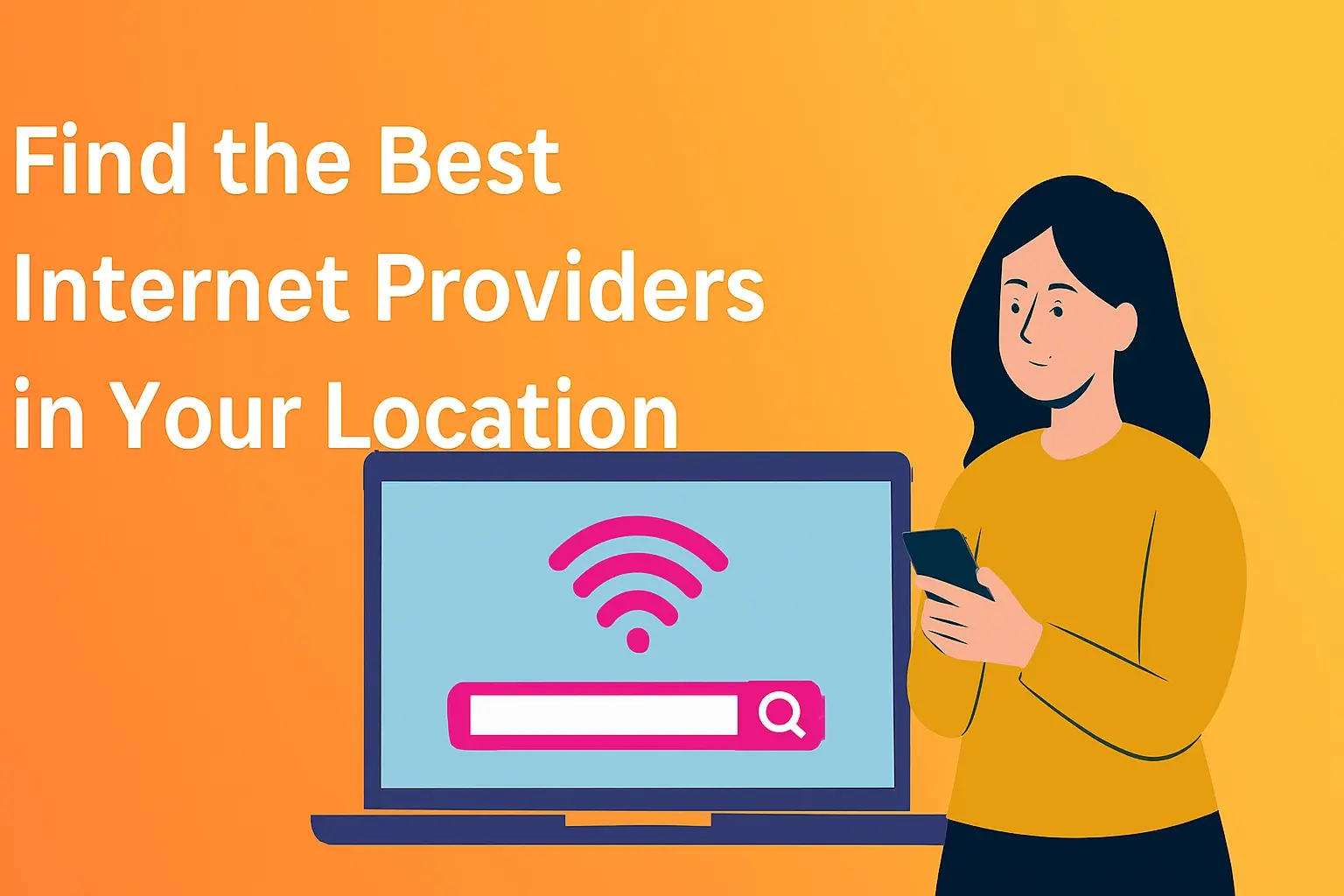Boost Productivity with Business Phone Internet Bundles

Unlock Peak Business Performance: The Power of Bundled Phone and Internet
In the dynamic business landscape of 2025, efficiency is paramount. Businesses are constantly seeking ways to streamline operations, reduce costs, and enhance communication. This is precisely where comprehensive business phone and internet bundles emerge as a strategic advantage. By integrating essential communication and connectivity services, these bundles offer a powerful solution to boost productivity, foster collaboration, and drive growth.
Why Business Phone and Internet Bundles Are Essential for Productivity in 2025
The modern workplace is inextricably linked to robust communication and reliable internet access. In 2025, businesses that fail to prioritize these foundational elements risk falling behind competitors. Business phone and internet bundles are no longer just a convenience; they are a necessity for maintaining operational fluidity and maximizing output. The convergence of these critical services simplifies management, reduces overhead, and unlocks a suite of advanced functionalities that directly impact productivity.
Consider the typical small to medium-sized business (SMB) in 2025. They often juggle multiple vendors for their phone system, internet service, and potentially other communication tools. This fragmentation leads to increased administrative burden, disparate billing, and potential compatibility issues. Bundled solutions address these pain points head-on, offering a unified approach that is both cost-effective and operationally superior.
Statistics from a 2025 SMB Technology Adoption Survey reveal that 78% of businesses that utilize bundled communication services reported a significant increase in employee productivity, compared to only 45% of those using separate services. Furthermore, 65% of bundled users experienced improved customer satisfaction due to more reliable and efficient communication channels. The data is clear: integrating your phone and internet services is a strategic move that pays dividends.
The shift towards hybrid and remote work models, which continue to be a dominant trend in 2025, further amplifies the need for seamless connectivity. Employees working from various locations require consistent access to business-grade phone services and high-speed internet to collaborate effectively, participate in video conferences, and access cloud-based applications without interruption. Bundles are designed to provide this ubiquitous access, ensuring that productivity remains high regardless of an employee's physical location.
Moreover, the complexity of managing separate IT infrastructure for voice and data can be a significant drain on resources, particularly for smaller organizations. Bundling simplifies this by consolidating support, billing, and technical management under a single provider. This frees up valuable IT personnel to focus on more strategic initiatives rather than day-to-day troubleshooting of disparate systems.
The competitive advantage gained from a well-chosen bundle is substantial. Businesses can leverage advanced features like unified communications, cloud-based PBX systems, and integrated video conferencing, all of which are often more accessible and affordable when bundled. These tools empower teams to communicate more effectively, share information instantly, and make decisions faster, ultimately driving business agility and responsiveness.
In essence, business phone and internet bundles in 2025 represent a foundational investment in a business's operational backbone. They are designed to not only meet current connectivity needs but also to provide a scalable platform for future growth and technological adoption. By consolidating these essential services, businesses can achieve greater operational efficiency, cost savings, and a significant boost in overall productivity.
Understanding the Core Components of Business Phone and Internet Bundles
To truly harness the power of business phone and internet bundles, it's crucial to understand what constitutes these integrated service packages. While offerings can vary significantly between providers and the specific needs of a business, most bundles will encompass a core set of components designed to provide comprehensive communication and connectivity solutions.
Business Internet Service
This is the bedrock of any modern business operation. High-speed, reliable internet is essential for everything from email and web browsing to cloud-based applications, video conferencing, and VoIP (Voice over Internet Protocol) phone systems. When selecting a bundle, the type and speed of internet service are paramount. Common options include:
- Fiber Optic Internet: Offering the fastest and most reliable speeds, fiber is ideal for businesses with high bandwidth demands, such as those relying heavily on video streaming, large file transfers, or extensive cloud computing. In 2025, fiber availability continues to expand, making it an increasingly attractive option.
- Cable Internet: A widely available and often more affordable option than fiber, cable internet provides good speeds for most SMBs. However, speeds can sometimes fluctuate based on neighborhood usage.
- DSL Internet: While generally slower than fiber or cable, DSL can be a viable option for businesses with lower bandwidth needs or in areas where other high-speed options are not available.
- Dedicated Internet Access (DIA): For businesses requiring guaranteed bandwidth and uptime, DIA offers a dedicated connection that is not shared with other users, ensuring consistent performance.
The bundle will specify the upload and download speeds, often measured in Mbps (megabits per second) or Gbps (gigabits per second). For 2025, businesses should aim for speeds that comfortably support their current and projected usage, considering the increasing demands of data-intensive applications.
Business Phone System (VoIP)
The "phone" component of these bundles typically refers to a Voice over Internet Protocol (VoIP) system. Unlike traditional landlines, VoIP uses your internet connection to transmit voice calls. This offers a wealth of advantages, including flexibility, scalability, and advanced features. Key aspects of a VoIP system within a bundle include:
- Hosted PBX (Private Branch Exchange): This is the most common type of VoIP system offered in bundles. The provider hosts the PBX functionality in their data centers, meaning you don't need to manage complex on-premises hardware. This simplifies IT management and reduces upfront costs.
- Number of Lines/Extensions: Bundles will specify how many simultaneous calls can be made and how many individual phone extensions (virtual phone numbers for employees) are included.
- VoIP Phones: Some bundles may include the physical VoIP desk phones, while others allow you to use softphones (software on computers or mobile devices) or existing compatible hardware.
- Features: The core functionality of the phone system is critical. This includes features like call forwarding, voicemail, auto-attendant (IVR), call waiting, conference calling, and more.
Bundled Services and Features
Beyond the core internet and phone system, bundles often include a variety of supplementary services and features designed to enhance productivity and communication:
- Unified Communications (UC): This is a broad term encompassing the integration of various communication tools like instant messaging, video conferencing, presence information (seeing if colleagues are available), and file sharing, all accessible through a single interface.
- Video Conferencing: Integrated video conferencing capabilities allow for face-to-face meetings with remote teams and clients, fostering better collaboration and reducing travel costs.
- Mobile App Integration: Many VoIP systems come with mobile apps that allow employees to make and receive business calls from their personal smartphones, using their business number.
- Customer Relationship Management (CRM) Integration: Some advanced bundles offer seamless integration with popular CRM software, allowing for call logging, contact management, and improved customer service workflows.
- Analytics and Reporting: Access to call data, such as call volume, duration, and wait times, can provide valuable insights into operational efficiency and customer service performance.
- Security Features: Robust security protocols are essential for protecting sensitive business communications. This can include encryption, firewalls, and fraud detection.
- Managed Services: Some providers offer managed services where they handle the ongoing maintenance, updates, and support for your phone and internet systems, further reducing your IT burden.
Understanding these components is the first step in evaluating which business phone and internet bundle will best align with your organization's specific operational needs, budget, and growth objectives for 2025 and beyond.
Transformative Benefits: How Bundles Directly Boost Your Bottom Line
The decision to invest in a business phone and internet bundle is driven by the tangible benefits it offers. In 2025, these advantages extend beyond mere cost savings to encompass significant improvements in operational efficiency, employee productivity, and customer satisfaction. By consolidating essential services, businesses unlock a cascade of positive outcomes that directly impact their bottom line.
Cost Savings and Predictable Billing
One of the most immediate and compelling benefits of bundling is cost reduction. When you purchase internet and phone services separately, you are often dealing with multiple providers, each with their own pricing structures, billing cycles, and potential for hidden fees. Bundling simplifies this by:
- Reduced Vendor Management: Managing one contract and one bill is far more efficient than juggling several. This saves administrative time and resources.
- Volume Discounts: Providers typically offer discounts when multiple services are purchased together. These savings can be substantial, especially for small to medium-sized businesses.
- Elimination of Redundant Hardware: VoIP systems, often included in bundles, can reduce the need for expensive on-premises phone equipment.
- Predictable Monthly Expenses: A single, consolidated bill makes budgeting easier and more predictable, allowing for better financial planning.
A 2025 study by the Global Business Technology Forum indicated that SMBs utilizing bundled communication solutions reported an average cost saving of 15-25% on their monthly telecommunications expenses compared to non-bundled solutions.
Enhanced Productivity and Collaboration
The integration of advanced communication tools within bundles is a direct driver of increased productivity. Features like unified communications, seamless video conferencing, and mobile integration empower employees to work more efficiently and collaboratively:
- Streamlined Communication: Unified platforms allow employees to switch between chat, voice, and video calls effortlessly, reducing the friction of communication.
- Improved Teamwork: Presence indicators, shared document access, and integrated project management tools within UC platforms foster better teamwork, even across distributed teams.
- Remote Work Enablement: With reliable internet and a flexible VoIP system, employees can maintain full productivity whether they are in the office, at home, or on the go. This is crucial for the hybrid work models prevalent in 2025.
- Faster Decision-Making: Real-time communication and collaboration tools enable quicker discussions and faster decision-making processes.
For example, a sales team can use their bundled VoIP system to instantly connect with a client via a video call, share product information through integrated chat, and log the interaction directly into their CRM, all within a single workflow. This efficiency translates directly into more closed deals and improved customer relationships.
Improved Customer Service and Responsiveness
The reliability and advanced features of bundled phone systems significantly enhance customer interactions:
- Professional Image: Features like auto-attendants and virtual receptionists create a professional first impression, directing callers efficiently.
- Reduced Wait Times: Advanced call routing and management features ensure that customer calls are handled promptly, minimizing frustration.
- Accessibility: With mobile integration, employees can answer customer calls from anywhere, ensuring that no inquiry goes unanswered.
- Data-Driven Insights: Call analytics provide valuable insights into customer behavior and service performance, allowing for targeted improvements.
A retail business in 2025 using a bundled VoIP system with an auto-attendant and intelligent call routing might see a 20% reduction in missed calls and a 15% increase in customer satisfaction scores, as customers are quickly directed to the right department or representative.
Scalability and Flexibility
Business needs evolve, and a good bundle should be able to grow with your company. VoIP systems are inherently scalable:
- Easy Expansion: Adding new users or lines is typically a simple process, often managed through an online portal, without requiring significant hardware changes.
- Adaptability: Bundles can often be customized or upgraded as your business requirements change, such as increasing internet bandwidth or adding advanced UC features.
- Geographic Flexibility: VoIP allows businesses to easily manage phone numbers from different geographic locations, supporting expansion into new markets without physical infrastructure changes.
This flexibility is invaluable in the fast-paced business environment of 2025, where agility is key to staying competitive.
Reliability and Uptime
Reputable bundle providers invest heavily in robust infrastructure to ensure high uptime and reliability for both internet and voice services. This means fewer dropped calls, fewer internet outages, and consistent performance, all of which are critical for maintaining productivity and customer trust.
In summary, business phone and internet bundles offer a multifaceted approach to enhancing business operations. They provide cost efficiencies, foster a more productive and collaborative work environment, elevate customer service, and offer the flexibility to adapt to future growth, ultimately contributing to a stronger, more profitable business.
Navigating Your Options: A Step-by-Step Guide to Choosing the Right Bundle
Selecting the ideal business phone and internet bundle requires a thoughtful approach. With a plethora of options available in 2025, it's essential to align your choice with your specific business needs, budget, and future aspirations. This step-by-step guide will help you navigate the process effectively.
Step 1: Assess Your Current and Future Needs
Before you even start looking at providers, take stock of what your business truly requires. Consider the following:
- Number of Employees: How many users will need phone lines and internet access? This impacts the number of lines, extensions, and potentially the bandwidth required.
- Internet Usage Patterns: What are your primary internet activities? Do you rely heavily on video conferencing, cloud applications, large file transfers, or simply email and web browsing? This will determine the necessary bandwidth and type of internet service (fiber, cable, etc.).
- Phone System Features: What specific features are essential for your operations? (e.g., auto-attendant, call recording, CRM integration, mobile app access, international calling).
- Call Volume: Estimate your average daily or monthly call volume. This helps in selecting a plan that accommodates your traffic without incurring overage charges.
- Remote/Hybrid Work: How many employees work remotely or in a hybrid model? This highlights the need for robust mobile and UC features.
- Growth Projections: Where do you see your business in the next 1-3 years? Choose a bundle that can scale with your anticipated growth.
Step 2: Research Providers and Their Offerings
Once you have a clear picture of your needs, begin researching providers that specialize in business communication solutions. Look for providers known for reliability, customer service, and competitive pricing. Pay attention to:
- Reputation and Reviews: Check online reviews, industry awards, and customer testimonials.
- Service Area: Ensure the provider offers their services in your specific geographic location.
- Bundle Options: Compare the different bundle packages offered by various providers. Do they align with your assessed needs?
- Service Level Agreements (SLAs): Understand the guaranteed uptime and support response times. This is critical for business continuity.
Step 3: Compare Internet Service Specifications
The internet component is fundamental. When comparing bundles, scrutinize the internet details:
- Speed (Download & Upload): Ensure the speeds are sufficient for your current and future needs. Don't overlook upload speeds, which are crucial for video conferencing and cloud backups.
- Type of Connection: Fiber is generally preferred for its speed and reliability, but cable might be more suitable depending on availability and cost.
- Data Caps: Check if there are any data usage limits. Most business plans have unlimited data, but it's essential to confirm.
- Static IP Addresses: If your business requires a static IP address for specific applications (e.g., hosting servers, VPNs), ensure it's included or available.
Step 4: Evaluate Phone System Functionality
The phone system is where much of the productivity enhancement lies. Dive deep into the features:
- Core Features: Verify that essential features like voicemail-to-email, call forwarding, and conference calling are included.
- Advanced Features: Prioritize features that will genuinely improve your workflow, such as auto-attendant, call queues, CRM integration, and unified communications.
- Scalability: How easy and cost-effective is it to add or remove users?
- VoIP Quality: While hard to test beforehand, look for providers that use robust networks and offer Quality of Service (QoS) features to ensure clear calls.
- Hardware Options: Understand if phones are included, if you can use your own, or if softphones are supported.
Step 5: Understand Pricing and Contract Terms
Cost is a significant factor, but it shouldn't be the only one. Be diligent about understanding the full financial picture:
- Monthly Costs: Compare the total monthly cost of comparable bundles.
- Setup/Installation Fees: Are there one-time charges for installation or equipment?
- Contract Length: Most business bundles require a contract (e.g., 1-3 years). Understand the commitment and any early termination fees.
- Hidden Fees: Read the fine print carefully for any potential surcharges or miscellaneous fees.
- Promotional Offers: Be aware of introductory pricing and how the cost will change after the promotional period.
Step 6: Consider Customer Support and Service Level Agreements (SLAs)
When issues arise, prompt and effective support is crucial. Inquire about:
- Support Channels: What methods of support are available (phone, email, chat)?
- Support Hours: Is support available 24/7, or only during business hours?
- Response Times: What are the guaranteed response times for different types of issues?
- Technical Expertise: Does the support team have the expertise to resolve complex technical problems?
Step 7: Request Quotes and Negotiate
Once you've narrowed down your choices, request detailed quotes from your top 2-3 providers. Don't hesitate to negotiate, especially if you have competing offers. Highlight your business needs and potential long-term commitment to secure the best possible terms.
Step 8: Read the Contract Thoroughly
Before signing anything, read the entire contract. Ensure that all agreed-upon terms, features, pricing, and SLAs are clearly documented. If anything is unclear, ask for clarification before signing.
By following these steps, businesses can make an informed decision, choosing a business phone and internet bundle that not only meets their current demands but also serves as a robust platform for future success and enhanced productivity in 2025.
Beyond Basics: Advanced Features That Elevate Productivity
While core internet and phone services are essential, the true power of modern business phone and internet bundles lies in the advanced features they offer. These functionalities go beyond basic communication, transforming how teams collaborate, manage workflows, and interact with customers. For businesses in 2025 aiming for peak efficiency, integrating these advanced capabilities is a strategic imperative.
Unified Communications (UC) Platforms
UC platforms are the cornerstone of modern productivity. They integrate various communication channels into a single, cohesive interface, drastically reducing context switching and improving workflow. Key UC features include:
- Instant Messaging (IM) and Presence: Allows employees to see the availability status of colleagues (online, away, busy) and communicate via quick text messages. This reduces the need for internal emails and phone calls for simple queries.
- Video Conferencing: High-definition video conferencing capabilities enable face-to-face meetings, fostering stronger connections and clearer communication, especially for remote or distributed teams. Features like screen sharing, virtual whiteboards, and recording are invaluable.
- File Sharing and Collaboration: Seamless integration of file sharing allows teams to collaborate on documents in real-time, track changes, and maintain a centralized repository of project-related materials.
- Voicemail to Email/Text Transcription: Voicemails are automatically transcribed and sent to an email inbox or as a text message, allowing for quick review and response without needing to listen to the entire message.
A 2025 report by the Future of Work Institute found that companies fully leveraging UC platforms saw a 25% increase in project completion speed and a 15% reduction in miscommunication incidents.
Contact Center as a Service (CCaaS) Integration
For businesses with customer service operations, integration with CCaaS solutions can be a game-changer. These platforms extend the capabilities of a standard phone system into a sophisticated customer interaction hub:
- Omnichannel Support: Manage customer interactions across various channels – voice, email, chat, social media – from a single interface.
- Intelligent Call Routing: Route incoming calls to the most appropriate agent based on skills, availability, or customer history.
- Interactive Voice Response (IVR) Systems: Sophisticated IVR systems can handle initial customer inquiries, provide self-service options, and gather information before connecting to an agent.
- Agent Dashboards: Provide agents with real-time customer information, call history, and relevant data to offer personalized and efficient support.
- Analytics and Reporting: In-depth analytics on call volume, wait times, resolution rates, and agent performance help identify areas for improvement.
A B2B service provider in 2025 utilizing CCaaS integration within their bundled solution reported a 30% improvement in first-call resolution rates and a 20% increase in customer satisfaction scores.
Customer Relationship Management (CRM) Integration
Seamless integration with CRM software is crucial for sales, marketing, and customer service teams. When your phone system and internet bundle connect with your CRM:
- Click-to-Dial: Initiate phone calls directly from CRM contact records with a single click, saving time and reducing errors.
- Automatic Call Logging: All incoming and outgoing calls can be automatically logged against the relevant customer contact in the CRM, providing a complete communication history.
- Screen Pops: When a call comes in, the CRM can automatically display the caller's information on the agent's screen, allowing for immediate personalization.
- Data Synchronization: Ensure that customer data is consistent across both systems, providing a unified view of the customer.
This integration streamlines workflows, improves data accuracy, and enables more personalized customer interactions, leading to stronger relationships and increased sales.
Mobile Workforce Enablement
The rise of remote and mobile work in 2025 necessitates tools that empower employees on the go:
- Mobile Apps: Robust mobile applications allow employees to make and receive business calls, send messages, and participate in video conferences from their smartphones, using their business number.
- Find Me/Follow Me: Calls can be configured to ring on multiple devices simultaneously or sequentially, ensuring employees don't miss important calls.
- Remote Access to UC Features: Employees can access all UC functionalities, including chat and presence, from anywhere with an internet connection.
This flexibility ensures that productivity isn't tied to a desk, allowing businesses to maintain operational continuity and responsiveness regardless of employee location.
Advanced Analytics and Reporting
Beyond basic call logs, advanced analytics provide deep insights into communication patterns and operational efficiency:
- Performance Metrics: Track key performance indicators (KPIs) such as average handling time, first call resolution, call abandonment rates, and agent productivity.
- Trend Analysis: Identify patterns in call volume, peak times, and customer inquiries to optimize staffing and resource allocation.
- Quality Monitoring: Some systems offer call recording and quality monitoring tools to assess agent performance and identify training needs.
- Cost Analysis: Detailed reports can help track communication costs and identify areas for potential savings.
These insights empower businesses to make data-driven decisions, refine processes, and continuously improve their operational efficiency and customer service delivery.
By incorporating these advanced features into their business phone and internet bundles, companies in 2025 can create a highly integrated, efficient, and responsive communication ecosystem that directly drives productivity, fosters collaboration, and enhances customer satisfaction.
Calculating the ROI: Is a Business Phone and Internet Bundle a Smart Investment?
The decision to invest in a business phone and internet bundle is ultimately a financial one. While the qualitative benefits of enhanced productivity and communication are clear, quantifying the return on investment (ROI) is crucial for justifying the expenditure. In 2025, a thorough ROI analysis will reveal that these bundles are not just an expense, but a strategic investment with significant financial returns.
Quantifying Cost Savings
The most straightforward aspect of ROI calculation involves tangible cost reductions:
- Reduced Monthly Expenses: Compare the total cost of your current separate services (internet, phone lines, PBX maintenance, long-distance charges) with the proposed bundled solution. Calculate the monthly savings.
Example: If current separate costs are $500/month and the bundle is $350/month, that's a $150/month saving.
- Elimination of Capital Expenditures: If the bundle replaces the need for expensive on-premises PBX hardware or frequent upgrades, factor in the avoided capital costs.
Example: Avoiding a $5,000 PBX upgrade represents a significant saving.
- Reduced Maintenance and IT Support Costs: Consolidating services under one provider often means less time spent by IT staff troubleshooting disparate systems and potentially lower external IT support bills.
Example: If IT staff spend 10 hours less per month on telecom issues at an average hourly rate of $75, that's $750/month saved.
- Lower Long-Distance and International Calling Rates: Many bundles include more competitive rates for toll calls, especially international ones.
Quantifying Productivity Gains
This is where the benefits become more nuanced but can still be quantified:
- Time Saved by Employees: Estimate the time employees save daily due to features like click-to-dial, faster call routing, unified communications, and reduced IT issues. Multiply this saved time by the average employee hourly cost.
Example: If 10 employees save just 15 minutes per day on communication tasks, and their average hourly cost is $30, that's (10 employees * 0.25 hours/day * 30 days/month * $30/hour) = $2,250/month saved.
- Increased Sales Revenue: Improved customer service, faster response times, and better lead management through CRM integration can lead to more closed deals. Try to estimate a conservative percentage increase in sales attributed to the new system.
Example: A 2% increase in monthly sales revenue, if your current revenue is $100,000, translates to $2,000 more per month.
- Reduced Missed Opportunities: Fewer missed calls and faster follow-ups mean fewer lost leads and potential revenue. Quantify this by estimating the value of a lost lead.
- Improved Employee Efficiency: Higher employee morale and reduced frustration from poor communication tools can lead to overall increased output. This is harder to quantify directly but contributes to the overall productivity boost.
Quantifying Improved Customer Satisfaction and Retention
While not directly a cost saving, improved customer satisfaction leads to increased customer lifetime value and reduced churn:
- Reduced Customer Churn: Estimate the cost of acquiring a new customer versus retaining an existing one. If improved service reduces churn by even a small percentage, the savings are significant.
- Increased Customer Lifetime Value: Happy customers tend to spend more over time.
- Positive Word-of-Mouth: Excellent customer service driven by efficient communication can lead to valuable referrals.
Calculating the ROI Formula
A basic ROI formula can be applied:
ROI (%) = [(Total Benefits - Total Costs) / Total Costs] * 100
Example Scenario (Monthly):
- Total Costs: $350 (Bundled service cost)
- Total Benefits:
- Cost Savings: $150
- Productivity Gains (Employee Time): $2,250
- Increased Sales Revenue: $2,000
- Total Benefits = $150 + $2,250 + $2,000 = $4,400
- ROI = [($4,400 - $350) / $350] * 100
- ROI = [$4,050 / $350] * 100
- ROI = 1157%
This hypothetical scenario illustrates a very strong ROI. Even with more conservative estimates, the financial benefits of a well-chosen bundle are typically substantial.
Payback Period
Another useful metric is the payback period – how long it takes for the accumulated benefits to equal the initial investment (including setup fees). A shorter payback period indicates a more attractive investment.
By carefully analyzing both the direct cost savings and the indirect productivity and revenue gains, businesses can confidently assess the financial viability of investing in a business phone and internet bundle in 2025. The data consistently shows that these integrated solutions offer a compelling ROI, making them a wise strategic choice.
Seamless Integration: Getting Your Bundle Up and Running
Once you've selected the perfect business phone and internet bundle, the next critical phase is implementation. A smooth transition ensures minimal disruption to your operations and allows you to start realizing the benefits of your new system as quickly as possible. In 2025, providers offer streamlined implementation processes designed for efficiency.
Planning and Project Management
A well-defined plan is the foundation of a successful implementation. This typically involves:
- Dedicated Project Manager: Your chosen provider will likely assign a project manager to oversee the entire process, acting as your primary point of contact.
- Timeline Development: A detailed timeline will be created, outlining key milestones, dependencies, and responsibilities for both your team and the provider.
- Site Survey (if applicable): For new internet installations or complex phone system setups, a site survey might be conducted to assess your premises and infrastructure.
- Inventory and Asset Management: Identify existing hardware (phones, routers) that might be reused or needs replacement.
Internet Installation and Activation
The internet installation process can vary depending on the technology:
- Fiber/Cable Installation: A technician will typically visit your premises to install the necessary cabling and equipment (modem/router).
- Activation: Once the physical installation is complete, the service will be activated remotely by the provider.
- Network Configuration: Your IT team or the provider's technicians will configure your network to utilize the new internet connection, including setting up Wi-Fi networks and ensuring security protocols are in place.
Providers often aim to complete internet activation within a few business days of the physical installation.
Phone System Deployment
Deploying a VoIP phone system typically involves several steps:
- Number Porting: If you're keeping your existing business phone numbers, this is a crucial step. The provider will manage the process of transferring your numbers from your old carrier to their network. This can take anywhere from a few days to a couple of weeks, depending on the complexity and the number of lines.
- Equipment Provisioning: If new VoIP phones are included, they will be pre-configured by the provider with your account settings and extensions before being shipped to you.
- System Configuration: Your provider will configure the hosted PBX system based on your specific requirements, including setting up auto-attendants, call queues, voicemail boxes, and user extensions.
- User Setup: For each employee, their extension will be assigned, and any necessary software (like softphones or mobile apps) will be installed and configured.
Testing and Validation
Thorough testing is essential before fully going live:
- Connectivity Testing: Verify that all devices can access the internet and that speeds meet the agreed-upon levels.
- Call Testing: Make and receive test calls to and from various numbers (internal extensions, external numbers, mobile phones) to ensure audio quality and functionality.
- Feature Testing: Test all critical phone system features, such as call forwarding, voicemail, auto-attendant menus, and conference calls.
- Integration Testing: If your bundle includes CRM or other integrations, ensure they are functioning correctly.
Training and User Adoption
A new system is only effective if your employees know how to use it. Comprehensive training is key:
- End-User Training: Provide training sessions for all employees on how to use the new phone system, including making calls, managing voicemail, and utilizing UC features.
- Administrator Training: If applicable, train designated administrators on how to manage user accounts, update settings, and access reports.
- Documentation and Resources: Provide users with easy-to-access guides, FAQs, and video tutorials for ongoing reference.
Encouraging adoption early on through clear communication and support can significantly enhance the perceived value of the new system.
Post-Implementation Support
The implementation doesn't end once the system is live. Ongoing support is vital:
- Dedicated Support Channels: Ensure you know how to contact support for any issues that arise.
- Performance Monitoring: The provider will typically monitor the network and system performance to proactively identify and address potential problems.
- Regular Check-ins: The project manager may schedule follow-up meetings to ensure your satisfaction and address any lingering questions or concerns.
By working closely with your provider and ensuring your internal team is prepared, the implementation of a business phone and internet bundle can be a remarkably smooth and efficient process, allowing your organization to quickly benefit from its enhanced capabilities in 2025.
The Future of Connectivity: What's Next for Business Bundles?
The landscape of business communication and connectivity is in constant evolution. As we look towards the future beyond 2025, several key trends are poised to shape the offerings and capabilities of business phone and internet bundles, further enhancing productivity and business agility.
AI-Powered Communication Tools
Artificial Intelligence (AI) is rapidly integrating into communication platforms. Future bundles will likely feature:
- Advanced Virtual Assistants: AI-powered assistants will go beyond simple IVR functions, capable of handling more complex customer inquiries, scheduling appointments, and providing personalized support with natural language processing.
- Real-time Translation: For global businesses, AI-driven real-time translation during calls and video conferences will break down language barriers, fostering seamless international collaboration.
- Predictive Analytics: AI will analyze communication patterns to predict customer needs, identify potential issues before they arise, and optimize resource allocation for support teams.
- Automated Call Summarization and Action Items: AI can automatically generate summaries of calls and identify key action items, saving significant administrative time.
Enhanced Cybersecurity Integration
As cyber threats become more sophisticated, bundles will increasingly incorporate advanced, integrated security features:
- AI-Driven Threat Detection: Proactive monitoring and AI algorithms will identify and neutralize threats in real-time, protecting both internet and voice communications.
- End-to-End Encryption: Stronger encryption protocols will become standard for all communications, ensuring data privacy and security.
- Unified Security Management: A single dashboard for managing network security, VoIP security, and endpoint protection will simplify IT administration.
- Zero Trust Architecture: Future implementations may lean towards zero-trust security models, where every connection and device is continuously verified.
5G and Beyond
The rollout and maturation of 5G technology will have a profound impact:
- Ultra-Fast Mobile Connectivity: 5G will provide significantly faster mobile internet speeds and lower latency, enhancing the performance of mobile VoIP and UC applications for remote workers.
- Internet of Things (IoT) Integration: As IoT devices become more prevalent in businesses, bundles may offer integrated solutions for managing and securing these connected devices.
- Fixed Wireless Access (FWA): In areas where fiber is not yet available, 5G FWA can offer a viable high-speed internet alternative, potentially included in bundles.
Greater Cloud-Native Architectures
The trend towards cloud-native solutions will continue, offering greater flexibility and scalability:
- Microservices Architecture: Bundles will be built on more modular, cloud-native architectures, allowing for easier updates, customization, and integration of new features.
- Serverless Computing: Leveraging serverless technologies can lead to more efficient resource utilization and cost savings for providers, which can be passed on to consumers.
- Enhanced Disaster Recovery: Cloud-based solutions inherently offer robust disaster recovery capabilities, ensuring business continuity.
Personalized and Adaptive User Experiences
Future bundles will focus on tailoring the user experience to individual needs and roles:
- Context-Aware Communication: Systems will become more aware of the user's context (e.g., location, current task, meeting schedule) to intelligently manage notifications and communication flow.
- Low-Code/No-Code Customization: Business users will have more tools to customize their communication workflows and integrations without requiring deep technical expertise.
- Proactive Performance Optimization: AI will continuously monitor and optimize network and application performance based on individual user behavior and system load.
Sustainability and Green IT
With increasing global focus on environmental impact, providers may start offering bundles with a stronger emphasis on sustainability, such as energy-efficient hardware and data centers powered by renewable energy.
These future trends indicate that business phone and internet bundles will continue to evolve from simple utility services into sophisticated, intelligent platforms that are integral to a business's operational success, driving even greater levels of productivity, collaboration, and innovation in the years to come.
Conclusion: The Unmistakable Advantage of Bundled Solutions
In the competitive business environment of 2025, maximizing productivity and operational efficiency is not just a goal; it's a necessity for survival and growth. Business phone and internet bundles have emerged as a pivotal strategy for achieving this. By consolidating essential communication and connectivity services, these packages offer a powerful synergy that streamlines operations, reduces costs, and unlocks advanced functionalities previously out of reach for many businesses.
We've explored how understanding the core components, from high-speed internet to feature-rich VoIP systems, is the first step. The transformative benefits – including significant cost savings, enhanced collaboration through unified communications, improved customer service, and the crucial scalability required in today's dynamic market – clearly demonstrate the tangible value these bundles provide. The detailed step-by-step guide to choosing the right bundle empowers businesses to make informed decisions tailored to their unique needs.
Furthermore, the integration of advanced features like AI-powered tools, CCaaS, and CRM connectivity, along with the promise of future innovations like 5G and enhanced AI, underscores the forward-thinking nature of these solutions. The clear ROI, both in terms of cost savings and productivity gains, solidifies the argument that these bundles are a sound financial investment, not merely an operational expense. A well-executed implementation ensures a smooth transition, allowing businesses to reap the rewards swiftly.
For any business looking to optimize its operations, foster seamless communication, and gain a competitive edge, investing in a comprehensive business phone and internet bundle is an undeniable strategic advantage. Embrace the power of integration and set your business on a path to sustained productivity and success.





